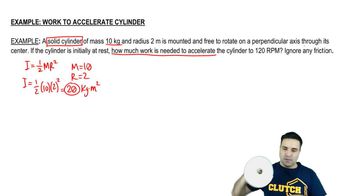Here are the essential concepts you must grasp in order to answer the question correctly.
Ohm's Law
Ohm's Law states that the current (I) through a conductor between two points is directly proportional to the voltage (V) across the two points and inversely proportional to the resistance (R) of the conductor. This relationship is expressed as V = IR. Understanding this law is crucial for analyzing electrical circuits and determining how voltage, current, and resistance interact in the hollow aluminum cylinder.
Recommended video:
Resistance of a Cylinder
The resistance of a hollow cylinder can be calculated using the formula R = ρL/A, where ρ is the resistivity of the material, L is the length of the cylinder, and A is the cross-sectional area. For the inner and outer surfaces, the area must be calculated based on the respective radii. This concept is essential for determining the resistance when measuring between different surfaces of the cylinder.
Recommended video:
Work to accelerate cylinder
Equipotential Surfaces
Equipotential surfaces are regions in an electric field where the electric potential is constant. When measuring resistance with an ohmmeter, it is important to recognize that connections made across equipotential surfaces will not show a potential difference, thus affecting the readings. In this scenario, treating the inner, outer, and end faces as equipotential surfaces simplifies the analysis of the electrical properties of the cylinder.
Recommended video:




